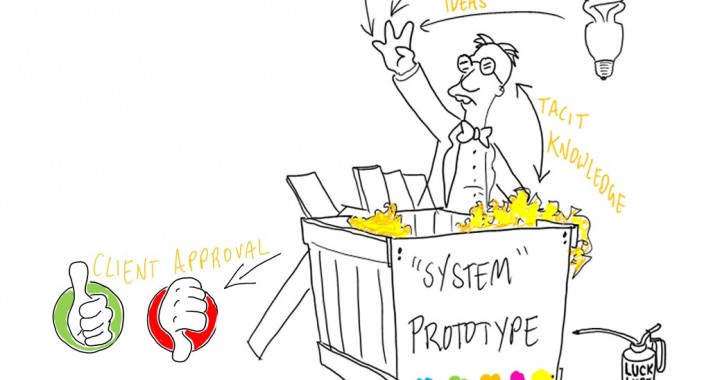How your business changes its strategic direction is often a source of great opportunity. But where can you find the font of knowledge that enables business innovation? Is it found in the minds of the seasoned industry experts, the fresh thinking MBA graduates, the experienced knowledge workers or is to be found in the very markets that use your goods or services?
Change management asks those awkward questions; Should you build better products or different products? Should you move from products to services? Are your current markets showing growth potential, if not where do you go from here? When faced with these tough questions there are four common sources that a business can draw upon. These four modes of enlightenment play their part in generating insight for the business.
- Direct customer observation. If you observe people using your good or service this will give you a greater insight into its usability and the unrealised capability. This will lead to insight into how it could be augmented with enhanced capability and thus extending its life-cycle. Empathic design is one approach to this.
- Conventional market research. Scanning the competitive field and observing the trends enables you to not only match the competition but anticipate future direction and be ahead of this curve. Fickle customer needs, market shifts or technological obsolescence all affect the business world – the smart are scanning and transmogrifying to survive. Be like Nokia – start in paper milling and end in Telco, using ‘communications’ as the thread that binds their strategic tapestry together.
- Technical and customer facing feedback. For many businesses, using the method of silo working often prevents a discussion occurring. If the strengths and weaknesses of a good or service are discussed by a cross discipline team there is a higher degree of insight gained from this interaction. Similarly there is as much to be learned about a product failure in the field as there is about a case study success. By bringing these teams together, learning from success and failure enables a business to adapt based on empirical 1st hand evidence. In this age of consultative selling many customers would value the opportunity to be involved in the innovation process. As indeed would internal employees – each with their own unique voice and ability to put their department specific lens onto the problem.
- Moments of clarity. Sometimes the ideas that inspire opportunity come out of nowhere – seemingly. Despite the days of strategic brainstorming and incomplete business planning, one day you are mowing the lawn and the idea just pops into your head. It takes a bold individual to walk back into the business and suggest they change market and product based on a moment of insight in the garden. Yet time and again inspiration happens outside of the office. It will come as no surprise that the majority of the top 100 most innovative companies all share a common trait – they spend time and money on building an office that does not look like an office. Furthermore they take their people away regularly to talk and play – in order to get the innovation juices flowing.
I have found over many years of working with companies, in fields as diverse as robotic engineering and food production, that combinations of these four modes of enlightenment work best to stimulate innovative thinking. I often find myself helping companies to incubate ideas and foster an appetite for using innovation as an engine of growth by mixing and matching modes of insight.
For me, the art of workshop facilitation is about coaxing out hair brained ideas and spending time on discussing their merits. The crazy ideas sometimes seem less crazy under the lens of considered, measured focus. I have observed moments of clarity being experienced by a staff that included the CEO and warehousemen. I am also of the opinion that no one person has everything that is needed to take an idea to the point of commercialisation. To truly create the next big thing for your business, give me a cross disciplined team every time.
I encourage you too, to consider these four modes of enlightenment. Look into the beyond for both commercial insight and radical innovation – I think that you will like what you see.
